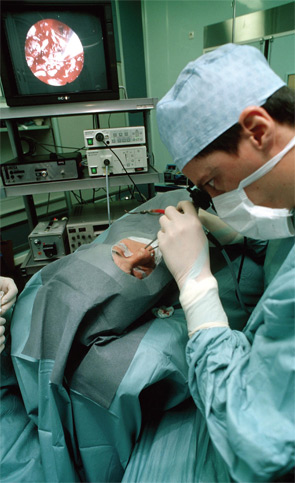Disease-specific quality of life (QoL) is improved with septorhinoplasty (SRPL), functional endoscopic sinus surgery (FESS), and combined surgery, and combining the procedures does not compromise QoL gain.
Hierarchical Task Analysis Can Help Reduce Error in FESS
HTA and the Systematic Human Error Reduction and Prediction Approach (SHERPA) are valuable tools to highlight potential errors in functional endoscopic sinus surgery (FESS).
Tasks Required for a Correct Training Approach to FESS
Ten tasks and 49 subtasks offer the opportunity to improve surgical training and enhance patient safety by identifying high-risk steps in functional endoscopic sinus surgery, and how risk can be mitigated.
Risks of Pharyngeal Pack Use Following FESS Outweigh Benefits
The authors advise against using the packs due to potential risks

Toward Better Outcomes: Avoid revision surgeries in chronic rhinosinusitis patients
For many patients with chronic rhinosinusitis, functional endoscopic sinus surgery (FESS) has provided much needed relief from a condition that, by its daily aggravation, can significantly reduce quality of life.

Patient Selection, Counseling Can Prevent FESS Failures, Disappointments
The success of functional endoscopic sinus surgery (FESS) often depends on patient selection and expectations, according to several experts.
Coding: It’s All in the Details
Getting reimbursed properly for performing procedures is all in the details, especially in areas that can be confusing to code.

Maximizing Results and Minimizing Complications during FESS

Integrated Approach Key to Evaluating Recalcitrant Rhinosinusitis Patients

The State of the Art of Image-Guided Surgery
Image-guided sinus (IGS) and skull base surgery is no longer considered experimental or investigational, and is appropriate for use by otolaryngologic surgeons to help clarify complex anatomy encountered during functional endoscopic sinus and skull base surgery (FESS).